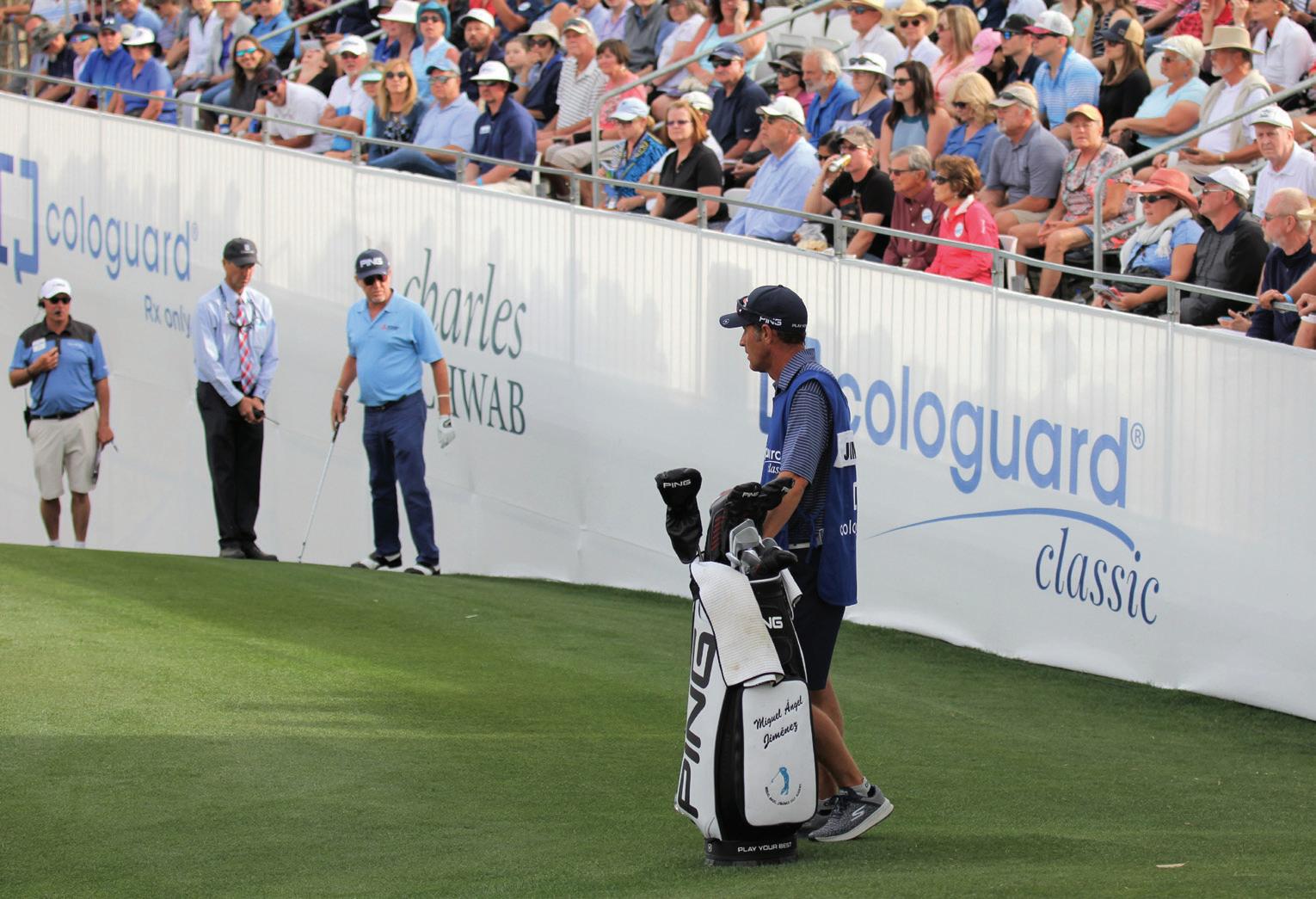
2 minute read
TAKING RELIEF
Measuring the Size of the Relief Area Where a Ball Must be Dropped and Played
The focus of the dropping procedure is on a specific “relief area” set by the Rule under which relief is being taken and is either one or two clublengths from a reference point (and may have certain other limitations).
Advertisement
The relief area is a fixed size for each player and is pre-determined based on the clubs the player has selected for play.
Procedure for Dropping a Ball
Players drop a ball when taking relief, the only requirement is that the ball be let go from knee height so that it falls through the air and does not touch any part of the player’s body or equipment before it hits the ground.
Requiring the player to drop a ball (as opposed to placing it) retains a desired randomness about where the ball ends up:
The player has no guarantee that the ball will come to rest on a desired spot or in a good lie.
This is especially the case when a ball is dropped in more difficult conditions such as thick rough or longer grass.
Allowing the player to drop a ball from knee height helps increase the chance that it stays within the relief area and to limit the extent to which a ball will embed in sand in a bunker.
Where a Dropped Ball Must Come to Rest
The ball must be dropped in and come to rest in the relief area; and there is no re-drop requirement if the dropped ball accidentally hits a person or object after hitting the ground but before coming to rest in the relief area.
If the dropped ball comes to rest outside the relief area, it is dropped a second time; if it comes to rest outside the relief area after being dropped a second time it is placed where it first touched the ground.
If the placed ball does not come to rest on that spot after two attempts, the player will then place the ball on the nearest spot (not nearer the hole) where it will come to rest.
Fixed Distances to be Used for Measuring
The definition of a club-length as the longest club other than a putter means that a player cannot choose which club to measure with based on the situation.
For example, players are no longer be able to make a strategic choice about the size of the relief area by choosing a longer club so that the player can reach a location that is farther from the nearest point of relief or other reference point.
Using the longest club for measuring minimizes the inconsistency in the size of a relief area between players (including eliminating the advantage for players who previously could have used a long putter for measuring).











